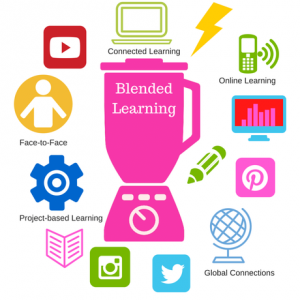
All learning is blended, except when done entirely on one’s own. Learning blends classroom and homework, study groups with independent work. We alternate between the different learning contexts because they are beneficial and each one contributes something to the learning process for each student. The new component, if something more than 30 years old may be called new, is the online mode as alternative to classrooms. It opens choices of online versus in-class for synchronous and asynchronous work.
Hence, the use of blending is not a question: all instructor-led education is blended. The question of blending relates to how it is done, its mixology. There are choices of ingredients and their proportions, namely the subject taught and the activities that should provide efficient and deep learning. The blend has to be meet the independence, motivation and self-regulatory capabilities of the students and their available time outside the class schedule and their technical skills. The blend has to be accomplished within the amount of work the teacher may invest in the course. How can a teacher get all this together?
I believe that teaching in this new era might require too much of the teacher and we need to work together as teachers with instructional designers, technicians and pedagogic experts in order to bring the subject we know to the students for more efficient and deeper learning that the traditional bland blend.
And for all of us novice mixologists, we need good recipes to start from.